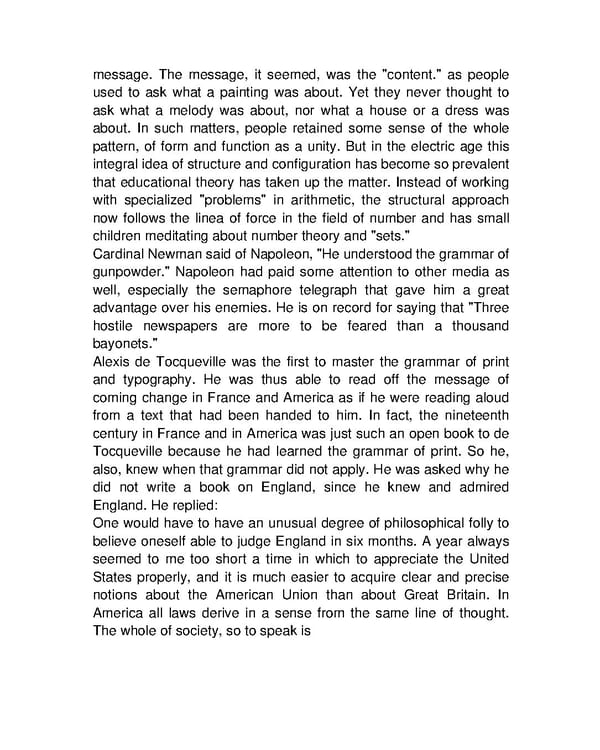message. The message, it seemed, was the "content." as people used to ask what a painting was about. Yet they never thought to ask what a melody was about, nor what a house or a dress was about. In such matters, people retained some sense of the whole pattern, of form and function as a unity. But in the electric age this integral idea of structure and configuration has become so prevalent that educational theory has taken up the matter. Instead of working with specialized "problems" in arithmetic, the structural approach now follows the linea of force in the field of number and has small children meditating about number theory and "sets." Cardinal Newman said of Napoleon, "He understood the grammar of gunpowder." Napoleon had paid some attention to other media as well, especially the semaphore telegraph that gave him a great advantage over his enemies. He is on record for saying that "Three hostile newspapers are more to be feared than a thousand bayonets." Alexis de Tocqueville was the first to master the grammar of print and typography. He was thus able to read off the message of coming change in France and America as if he were reading aloud from a text that had been handed to him. In fact, the nineteenth century in France and in America was just such an open book to de Tocqueville because he had learned the grammar of print. So he, also, knew when that grammar did not apply. He was asked why he did not write a book on England, since he knew and admired England. He replied: One would have to have an unusual degree of philosophical folly to believe oneself able to judge England in six months. A year always seemed to me too short a time in which to appreciate the United States properly, and it is much easier to acquire clear and precise notions about the American Union than about Great Britain. In America all laws derive in a sense from the same line of thought. The whole of society, so to speak is
 Understanding Media by Marshall McLuhan Page 14 Page 16
Understanding Media by Marshall McLuhan Page 14 Page 16